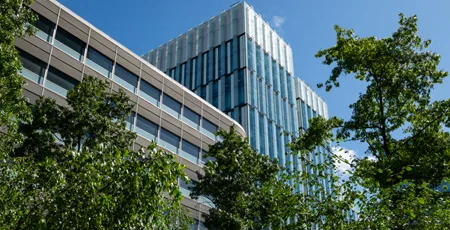Supply chain disturbance
The risk of disturbances to global supply chains has never been so under the spotlight.
The risk of disturbances to global supply chains has never been so under the spotlight, says Fahian Huq.
Driven by globalisation, rapidly changing markets and emerging technologies, supply chains have become increasingly complex in recent decades. At the same time, the continued dominance of the offshore outsourcing business model has only increased firms’ vulnerability to a range of supply chain disturbances such as natural weather disasters, or political and economic instability.
Even before the pandemic struck there were growing concerns around the structure and interconnectedness of global supply chains, with managers increasingly weighing up the relative costs and benefits of remote outsourcing compared to near-shoring or reshoring strategies.
Disruption
In a paper* I co-wrote just before the pandemic we looked at these very issues, discussing how geopolitical disturbances such as natural disasters or societal disruptions could impact all members of a regional supply chain at once. Little did we know at the time we were writing our paper, what an understatement this would be given recent events.
Our study was built around an in-depth case study of a high-value manufacturing firm in the aerospace industry, a sector that has since been massively impacted by the pandemic. One of our underlying objectives was to investigate how internally facing product managers perceive firm, network and location related supply chain disturbances compared with externally facing supply chain managers.
The logic is that if the managerial perceptions of risk within the same supply chain significantly differ, then risk mitigation becomes more difficult. Whereas if internally and externally facing managers have similar perceptions of supply chain disturbances, then it will be easier to implement effective mitigation strategies.
Even before the pandemic struck there were growing concerns around the structure and interconnectedness of global supply chains.
Findings
Based on in-depth interviews with both sets of managers – those dealing with the overall supply chain and those dealing with specific products - our findings showed that managers’ perceptions of supply chain disturbances can be prejudiced by their day-to-day exposure to the workings of the supply chain.
For instance, our results showed that internally facing managers perceive supply chain disturbances to be less than externally facing managers when the strategy is built around offshore outsourcing. This is probably because externally facing managers have a more realistic view of the disturbances associated with more dispersed and complex supply chains.
By contrast internally facing managers seem more prone to the illusion that they are in control, and this inherent optimism can cause them to sometimes ignore or downplay the possibility of disturbances.
Preferences
What was revealing was that both product and supply chain managers actually preferred insource/near-shore strategies as they perceived that the disturbances while outsourcing/offshoring are significantly greater and offset the benefits of low-cost production.
One of the primary reasons for this is that the near-shore strategy can have multi-faceted benefits for a firm’s production system. For example, shorter delivery lead times make supply chains simpler and more resilient by reducing the amount of inventory management needed, by mitigating the uncertainties around delivery times, and by avoiding the creation of redundant systems and capacity.
Interestingly, even though the study was carried out pre COVID-19, geopolitical issues were ranked second by product managers and fourth by supply chain managers when the company strategy is built around offshoring from Asia, indicating that this was already quite high on their agenda.
Mitigation strategies
Our study then looked at mitigation strategies that can be employed. For instance, one strategy was building clusters in emerging markets to support a firm’s regional hub by partnering with its existing suppliers from developed countries.
Migrating an existing supplier to a low-cost location is considered a low-risk remote outsourcing option. By working with existing suppliers, which already possess technical expertise, a company can reduce time to produce, especially during new product introduction. These clusters can also minimise operational costs and maximise the benefits linked to better coordination and improved communication with suppliers.
Another strategy was reshoring which could generate opportunities for the UK’s high-value manufacturing sector by developing the domestic supply chain further, especially its innovation capabilities.
Future trends
The events of the past 12 months have shown us the importance of these supply chain disturbance mitigation strategies and has accelerated the re-configuration of global supply networks.
For instance, post-pandemic there will be attempts by some multinationals to decouple from China and develop independent suppliers in the Far East. However, moving out of China will be challenging as it will be difficult to replace an established supplier base.
Text BoxAs such I think we will see a more balanced approach – perhaps not extensive reshoring but more near-shoring with locations nearer to major markets (e.g. Japan, Mexico, Taiwan and Eastern European countries) benefitting. As our research suggests, firms could do this incrementally by building clusters in emerging markets to support their regional hub and partnering with existing suppliers from developed countries.
*Disturbances to the supply chains of high-value manufacturing firms: comparison of the perceptions of product managers and supply chain managers (Huq, Pawar, Subramanian)





